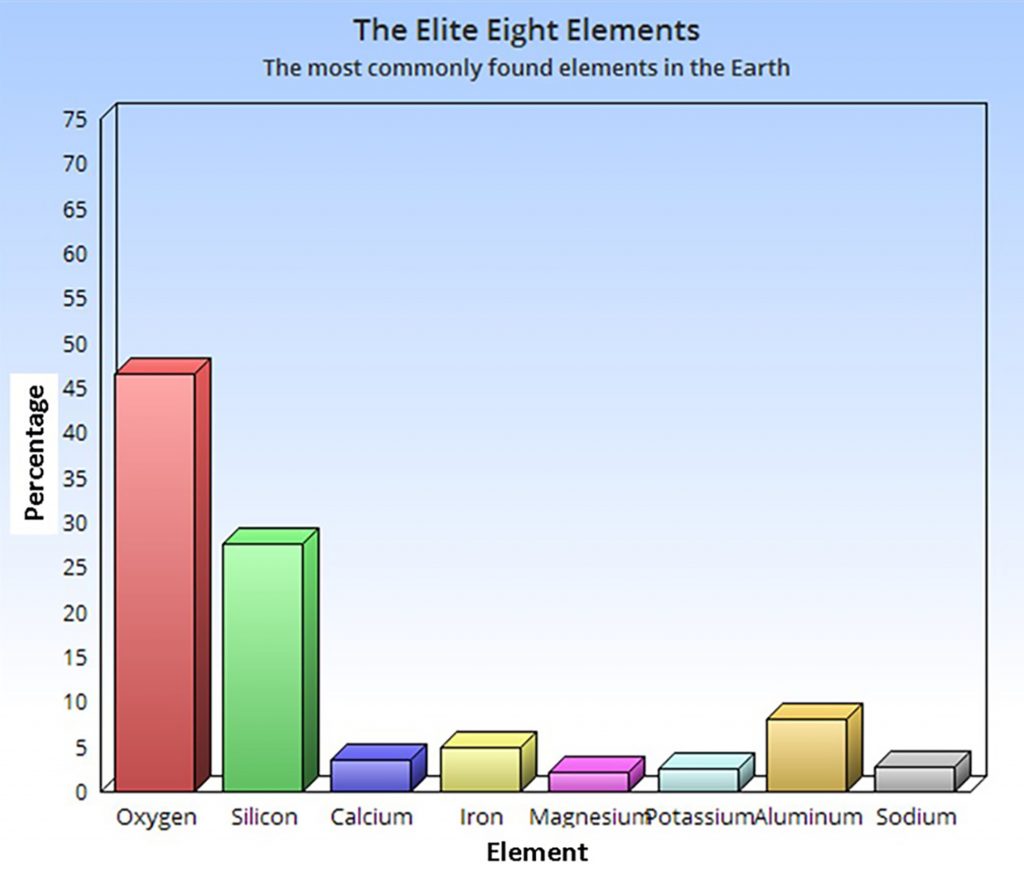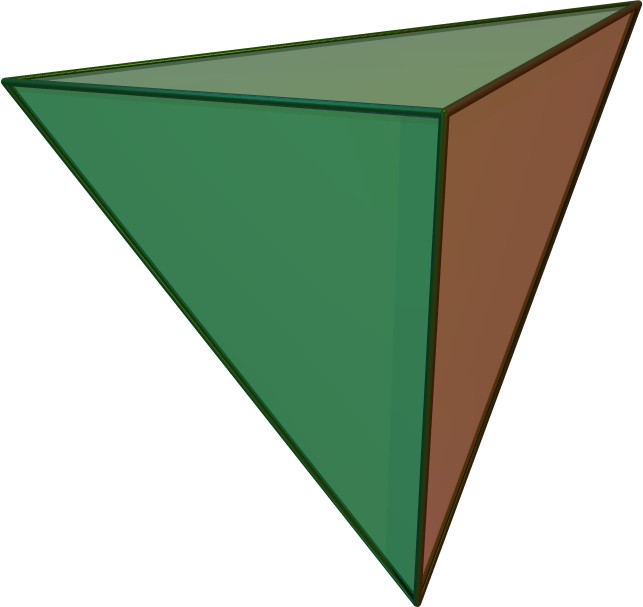
16 Most Common Earth Elements, Silicate Minerals and the Silicate Tetrahedron
The table shows the abundance of elements in Earth’s crust. See: https://en.wikipedia.org/wiki/Abundance_of_elements_in_Earth%27s_crust

Most of the minerals in the earth are silicate minerals.
The building block of silicate minerals—the essential component that makes them silicate minerals—is the silicate tetrahedron (see https://en.wikipedia.org/wiki/Silicon%E2%80%93oxygen_tetrahedron). The silicate tetrahedron consists of four oxygen atoms arranged as close as they can get around a central silicon atom. The result is a pyramidal shape known as a tetrahedron, with an oxygen atom at each of its four apices. (The apices are the points on the tetrahedron where three corners come together.)


The silicon atom by itself has four electrons in its outer shell. In the silicate tetrahedron each of those four electrons is being shared with one of the four attached oxygen atoms. In turn, each oxygen atom is sharing one of the 6 electrons it has in its outer shell.
The result is that the silicon at the center of the tetrahedron has, in effect, a full outer shell with eight electrons in it. Those eight electrons are shared, in pairs, with the four oxygen atoms of the tetrahedron. Each oxygen atom in the tetrahedron, in turn, will have seven electrons in its outer shell—if there is nothing more to the system than the one silicon atom bonded to the four oxygen atoms. This would leave each oxygen atom one electron short of having a full outer shell of electrons.
However, oxygen is a strongly electronegative element, which means that it has the strength to attract electrons from other elements to its nucleus in most situations.
In a silicate mineral, each oxygen atom in the silicate tetrahedron will actually have eight electrons: the six electrons that each oxygen atom had in its outer electron shell to begin with, the electron it gained by sharing a pair of electrons in a covalent bond with the silicon atom in the tetrahedron, and one more electron from another atom (or another small group of atoms) in the mineral, outside the tetrahedron.
Silicate tetrahedra are able to bond with many common elements in many different crystal lattice arrangements. In addition, silicate tetrahedra are able to bond with other silicate tetrahedra in a variety of geometric arrangements, including rings, sheets, chains, and three-dimensional networks.
